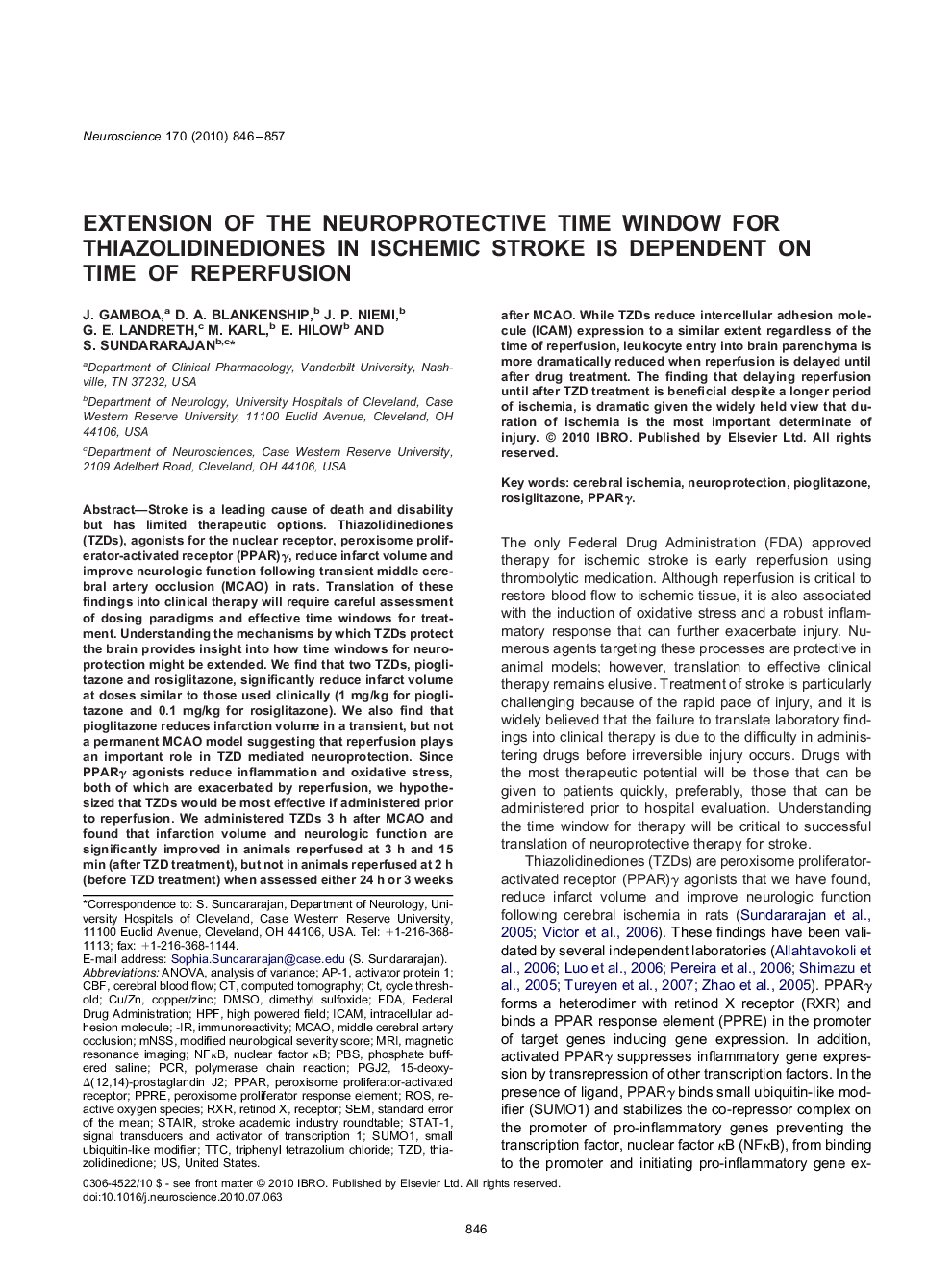| Article ID | Journal | Published Year | Pages | File Type |
|---|---|---|---|---|
| 6276824 | Neuroscience | 2010 | 12 Pages |
Abstract
Stroke is a leading cause of death and disability but has limited therapeutic options. Thiazolidinediones (TZDs), agonists for the nuclear receptor, peroxisome proliferator-activated receptor (PPAR)γ, reduce infarct volume and improve neurologic function following transient middle cerebral artery occlusion (MCAO) in rats. Translation of these findings into clinical therapy will require careful assessment of dosing paradigms and effective time windows for treatment. Understanding the mechanisms by which TZDs protect the brain provides insight into how time windows for neuroprotection might be extended. We find that two TZDs, pioglitazone and rosiglitazone, significantly reduce infarct volume at doses similar to those used clinically (1 mg/kg for pioglitazone and 0.1 mg/kg for rosiglitazone). We also find that pioglitazone reduces infarction volume in a transient, but not a permanent MCAO model suggesting that reperfusion plays an important role in TZD mediated neuroprotection. Since PPARγ agonists reduce inflammation and oxidative stress, both of which are exacerbated by reperfusion, we hypothesized that TZDs would be most effective if administered prior to reperfusion. We administered TZDs 3 h after MCAO and found that infarction volume and neurologic function are significantly improved in animals reperfused at 3 h and 15 min (after TZD treatment), but not in animals reperfused at 2 h (before TZD treatment) when assessed either 24 h or 3 weeks after MCAO. While TZDs reduce intercellular adhesion molecule (ICAM) expression to a similar extent regardless of the time of reperfusion, leukocyte entry into brain parenchyma is more dramatically reduced when reperfusion is delayed until after drug treatment. The finding that delaying reperfusion until after TZD treatment is beneficial despite a longer period of ischemia, is dramatic given the widely held view that duration of ischemia is the most important determinate of injury.
Keywords
Copper/zincAP-1MCAOmNSSCBFhpfICAMPPARPPARγTTCRXRTZDPGJ2Cu/ZnFDASUMO1PBSSTAT-1DMSONFκBROScycle thresholdFederal Drug AdministrationPPREMRImiddle cerebral artery occlusionUnited StatesCerebral ischemiaImmunoreactivityanalysis of varianceANOVATriphenyl Tetrazolium ChlorideMagnetic resonance imagingcomputed tomographyThiazolidinedionecerebral blood flowstandard error of the meanDimethyl sulfoxiderosiglitazoneperoxisome proliferator response elementnuclear factor κBPhosphate buffered salineNeuroprotectionSEMintracellular adhesion moleculemodified neurological severity score-irpolymerase chain reactionPCRactivator protein 1Stairsmall ubiquitin-like modifierPioglitazoneReactive oxygen speciesperoxisome proliferator-activated receptor
Related Topics
Life Sciences
Neuroscience
Neuroscience (General)
Authors
J. Gamboa, D.A. Blankenship, J.P. Niemi, G.E. Landreth, M. Karl, E. Hilow, S. Sundararajan,
